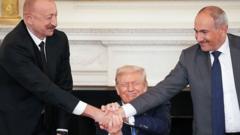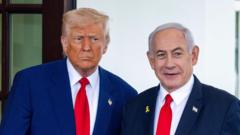The US and China have extended their trade truce by 90 days, avoiding a tariff hike that could have spurred economic turmoil. This proactive measure aims to facilitate productive negotiations, addressing concerns over tariffs and fostering better trade relations.
US-China Trade Truce Extended: A Temporary Solution Amid Ongoing Tensions

US-China Trade Truce Extended: A Temporary Solution Amid Ongoing Tensions
Amid escalating trade tensions, the US and China have agreed to extend their tariff truce, maintaining a temporary suspension of higher tariffs and fostering ongoing negotiations.
As global markets hold their breath, the United States and China have made the strategic decision to extend their fragile trade truce by an additional 90 days, averting the onset of heightened tariffs that were set to take effect shortly. This extension was announced just hours before an escalation in tariffs could have jolted the already fragile economic landscape.
An executive order signed by President Trump on Monday ensures that the agreement established in May remains intact, wherein both nations temporarily suspended some tariffs on each other's goods. The urgency surrounding this extension was palpable, as US officials had warned that significant increases in tariffs could have dire consequences for the economy and consumer prices.
Discussions between the two countries saw positive momentum in their last meeting, with both sides describing the dialogue as "constructive." China's chief negotiator expressed a willingness to maintain the truce, while US representatives awaited Trump’s final approval for the continuation of the agreement.
Previously, escalating trade tensions had reached a boiling point earlier this year, when President Trump unveiled new tariffs impacting various countries, with China facing some of the brunt of the measures. Beijing retaliated swiftly, leading to a reciprocated cycle of tariffs that almost collapsed bilateral trade altogether. Through the May agreement, Chinese goods entering the US faced a 30% tariff increase compared to January, while American goods exported to China carried a new surcharge of 10%.
This latest truce extension occurs in parallel with ongoing discussions on pressing issues, such as China's access to rare earth minerals, the nation's oil purchases from Russia, and constraints on US technology exports to China, including semiconductor sales. Recently, the US relaxed some export restrictions, allowing companies like AMD and Nvidia to resume chip sales to China under specific financial conditions.
Despite the truce's apparent success, trade flow data indicates a continued decline in import-export dynamics between the two nations. US imports from China nosedived nearly 50% year-over-year in June alone, while American exports to China also fell by a significant margin.
As negotiations progress, the global community watches keenly for the outcome of these discussions, hoping a more sustainable resolution can be achieved in the complex tapestry of US-China relations.



















